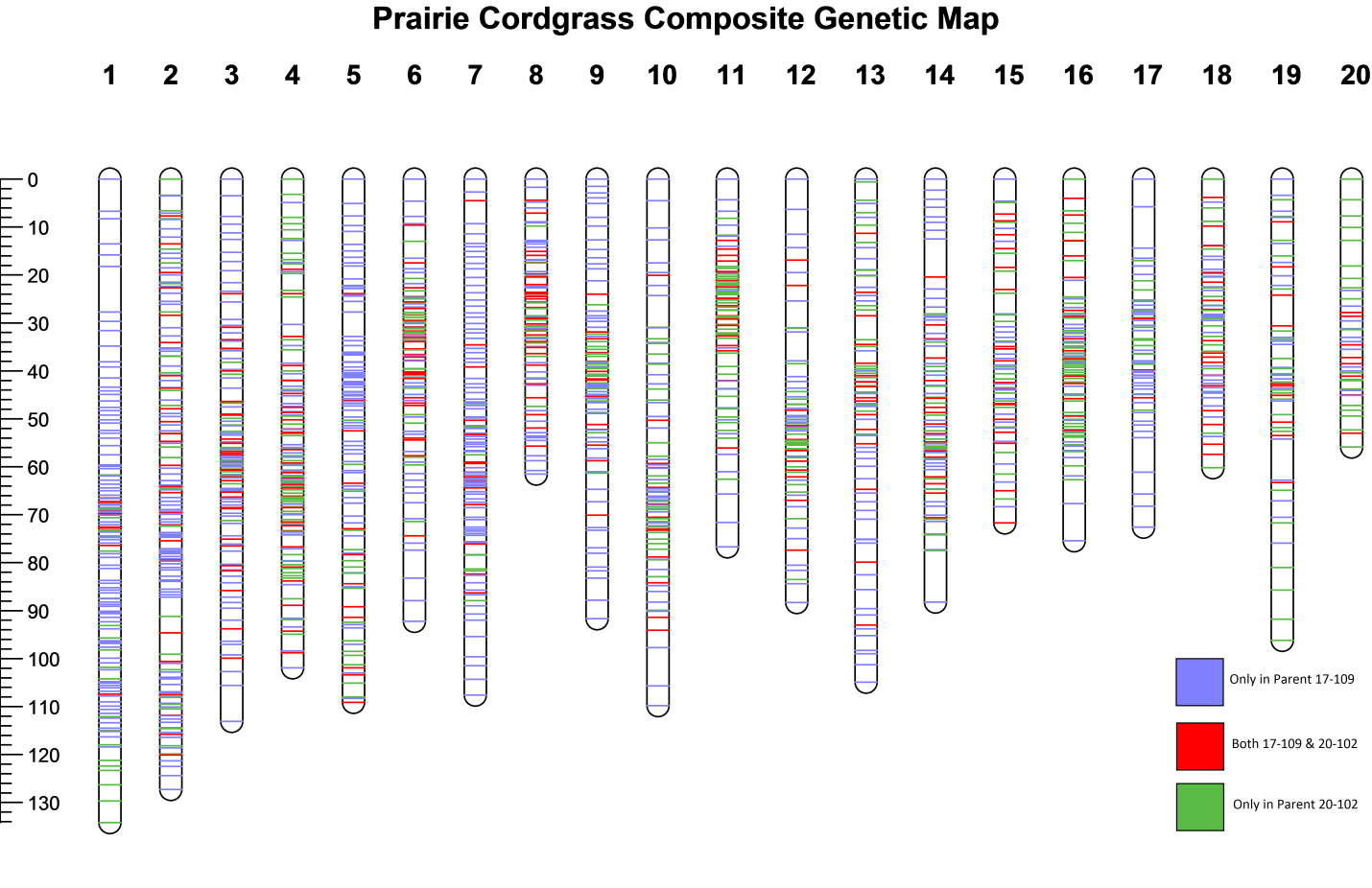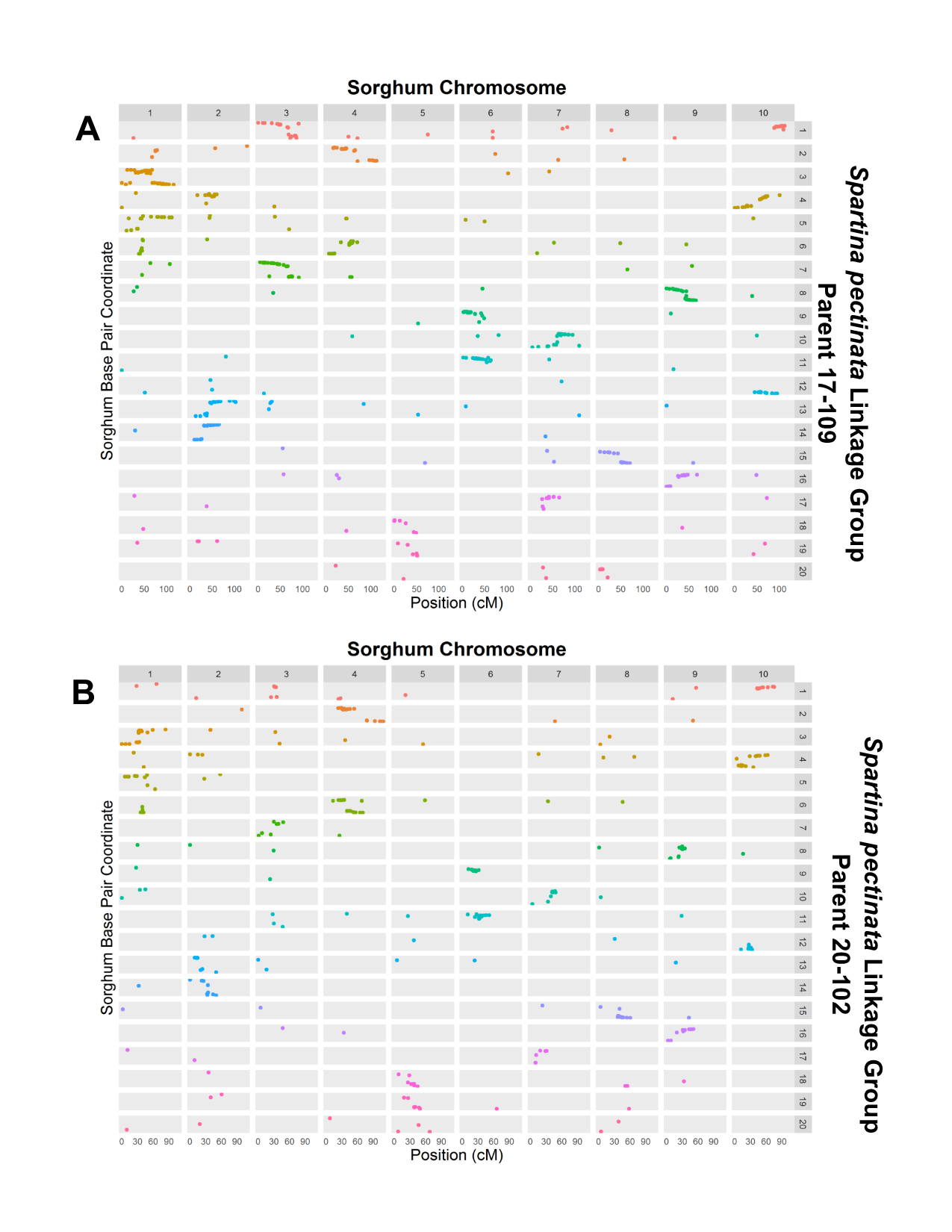Linkage mapping in prairie cordgrass (Spartina pectinata Link) using genotyping-by-sequencing
Published in Molecular Breeding, 2016
Recommended citation: Crawford, J., Brown, P. J., Voigt, T., & Lee, D. K. (2016). Linkage mapping in prairie cordgrass (Spartina pectinata Link) using genotyping-by-sequencing. Molecular Breeding, 36(5), 1-12 https://link.springer.com/article/10.1007/s11032-016-0484-9
In this first-author paper I created the first genetic map of prairie cord grass, a candidate C~4~ bioenergy crop. The interesting twist is that prairie cord grass is a tetraploid; it has 4 copies of its genome. Before this we did not know if it used diploid inheritance of genes or polysomic inheritance. We determined that it seems to function like a diploid which is more amenable to making crosses and breeding this species. We used genotyping-by-sequencing (GBS) to generate thousands of genetic markers. Another twist of this paper was that we used the incomplete tef genome scaffolds to bridge to the sorghum genome and this gave a view of how similar the chromosome structures of prairie cordgrass are to sorghum. This was a fantastic masters project because I learned a full spectrum of scientific skills like greenhouse hybridization/crossing, field study design, DNA extraction, GBS wet lab techniques as well as the GBS data production pipeline, and statistical genetic mapping.

Composite genetic map of prairie cordgrass. The map was constructed from 1,773 GBS markers of three segregation types. The F1 pseudo-testcross mapping population is from a reciprocal cross of parent plants 17-109, originating from Illinois, and 20-102, a population originating from Kansas. Corresponding linkage groups were determined by location of shared markers. Parental maps of corresponding linkage groups were integrated using a fixed order from parent 17-109.

GBS reads from prairie cordgrass linkage maps were aligned to the draft genome scaffolds of Eragrostis tef, a grass also in the Chloridoideae subfamily. The tef scaffolds that prairie cordgrass genetic markers aligned to were subsequently aligned to the Sorghum bicolor genome. Each cell in the graph is a plot of the genetic distance from the prairie cordgrass genetic map (x-axis) plotted against the physical base pair position (y-axis) in sorghum. A) Parent 17-109; B) Parent 20-102. Tick marks of the y-axis range from 0 to 108 and were removed for clarity.
Crawford, J., Brown, P. J., Voigt, T., & Lee, D. K. (2016). Linkage mapping in prairie cordgrass (Spartina pectinata Link) using genotyping-by-sequencing. Molecular Breeding, 36(5), 1-12
Keywords Prairie cordgrass (Spartina pectinata) Linkage mapping Genotyping-by-sequencing (GBS) Polyploidy Allopolyploidy Autopolyploidy Disomic inheritance Polysomic inheritance C~4~ bioenergy biofuel genetic mapping
